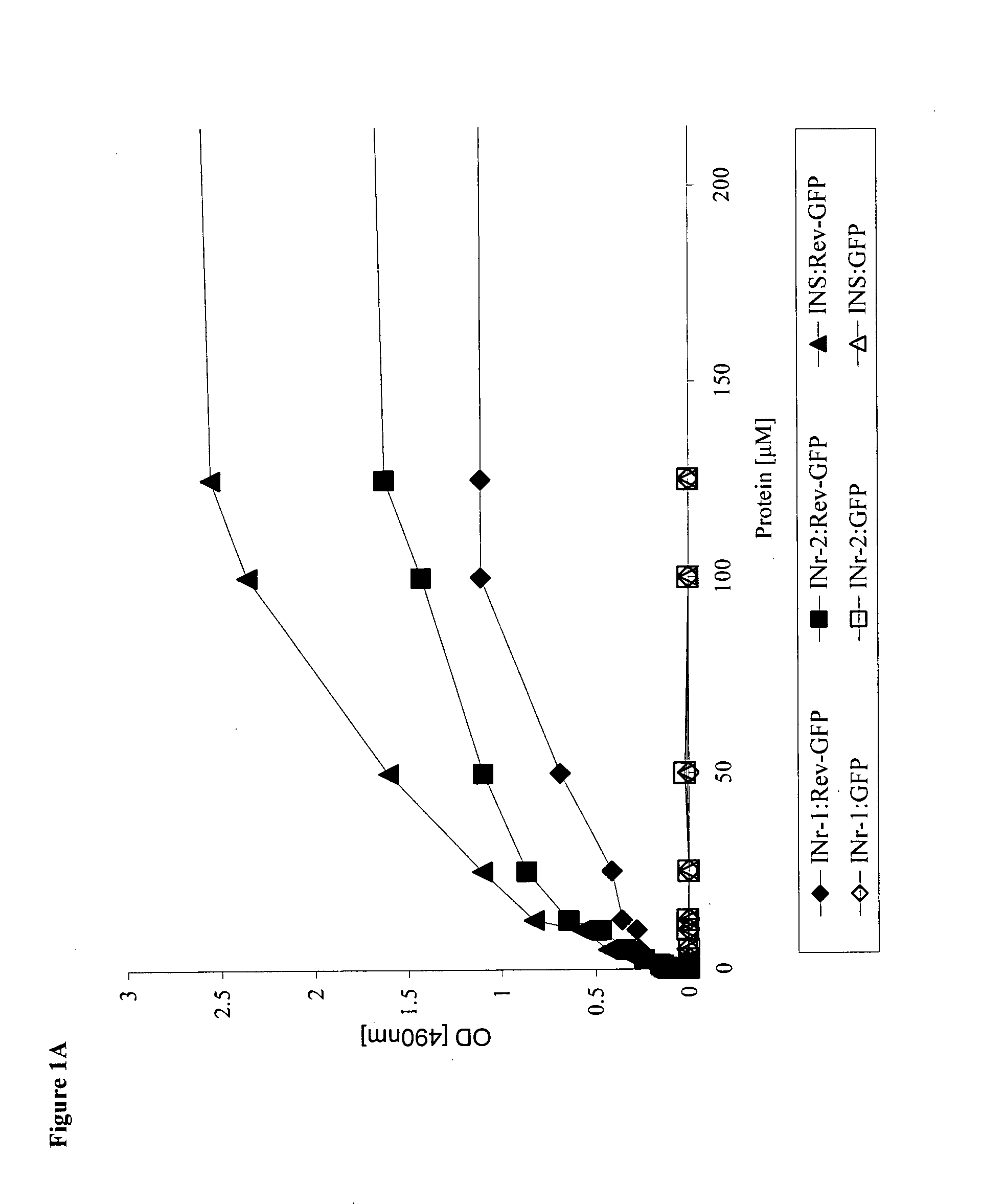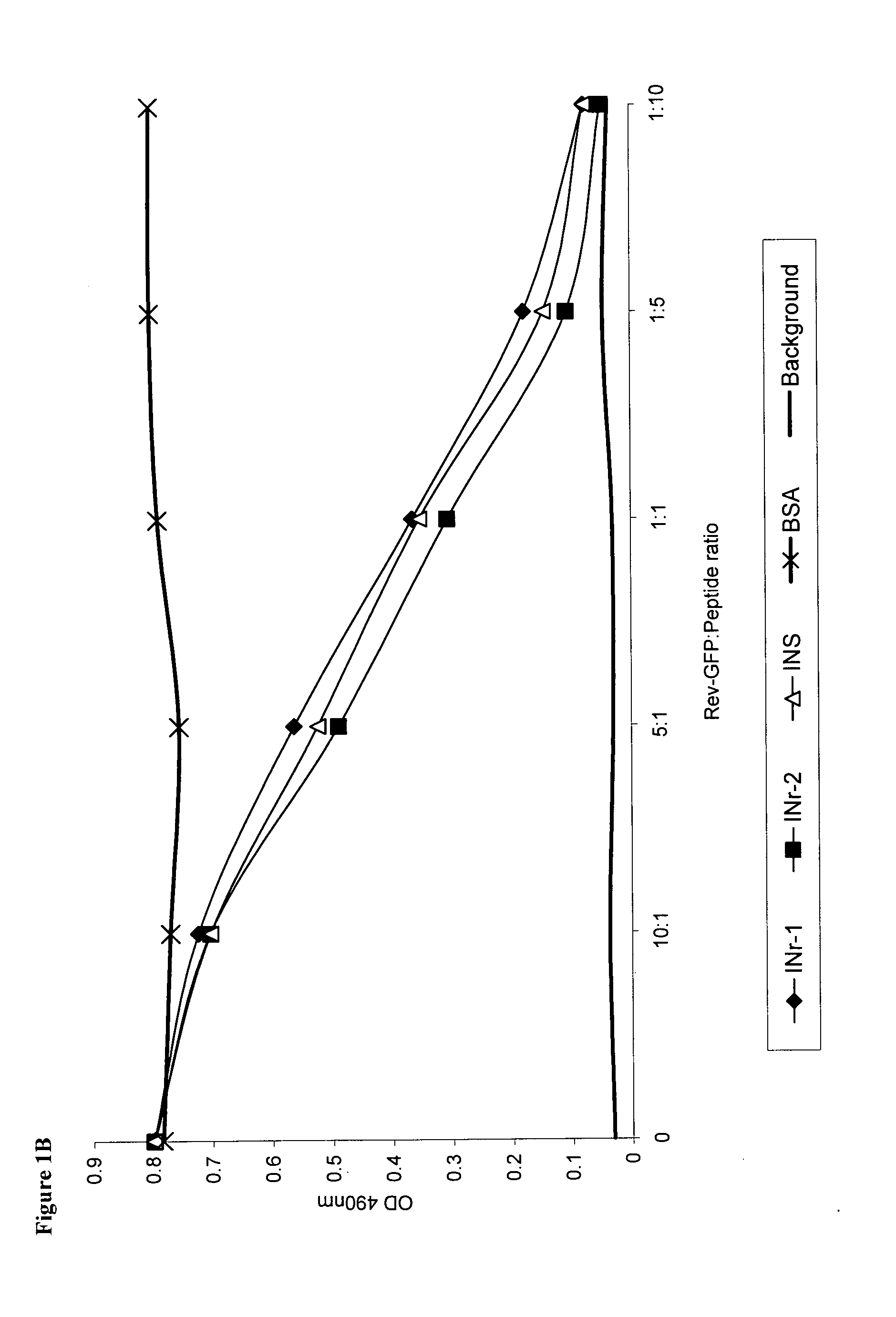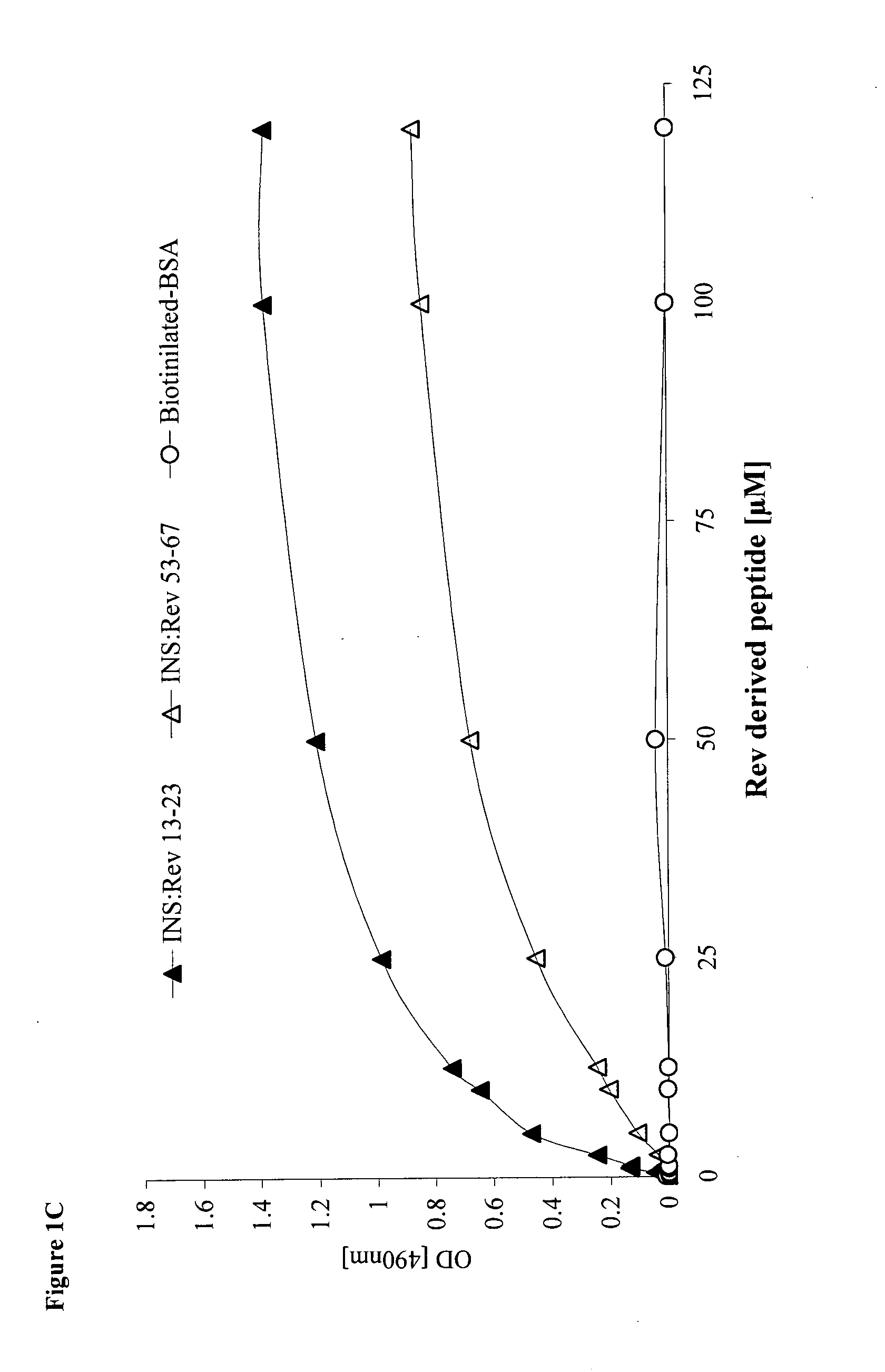Hiv-1 integrase derived stimulatory peptides interfering with integrase -- rev protein binding
a technology of stimulatory peptides and integrase, which is applied in the field of bioactive peptides, can solve the problems of few inhibitors identified to da
- Summary
- Abstract
- Description
- Claims
- Application Information
AI Technical Summary
Benefits of technology
Problems solved by technology
Method used
Image
Examples
example 1
Selection of IN-Derived Peptides
[0136]Selection of peptide sequences that interact with the Rev protein, Rev-derived peptides, and the IN itself was made by screening of an IN peptide library (NIH AIDS Research and Reference Reagent Program, Division of AIDS, NIAID, NIH: HIV-1 Consensus B Pol (15-mer) peptides—Complete Set from DAIDS, NIAID), using an ELISA-based assay system. Three IN-derived peptides (INS, INr-1, INr-2), were identified as specifically interacting with Rev protein labeled with green florescent protein (Rev-GFP). One of the identified peptides (INS) was found to interact also with the IN protein itself. The amino acid sequence and the binding patterns of the identified peptides are shown in Table 1 and FIG. 1A. The results in FIG. 1B show that addition of INS or INrs peptides to the complex formed between IN and Rev-GFP induces the release of the bound Rev-GFP. This observation further confirmed that the sequence of the INS and INrs peptides within the IN protein m...
example 2
Specific Abrogation of the Inhibitory Effect of the Rev Protein and Rev-Derived Peptides on IN Enzymatic Activity, by the INS and INrs Peptides
[0138]The results depicted in FIG. 2A clearly show that the enzymatic activity of IN is inhibited by Rev-GFP (GFP designates Green fluorescent protein used to label the protein / peptide) due to specific interaction with the Rev protein itself and not with the GFP (FIG. 2A). At a Rev-GFP:IN (mole / mole) ratio of about 100, approximately 30% inhibition was already observed, reaching up to 70% inhibition at a ratio of 400 (FIG. 2A). Interestingly, the INS and INrs peptides abrogated the inhibitory activities of Rev-GFP (FIGS. 2B and C). The results in FIG. 3 confirm previously described results (Rosenbluh et al., 2007, J Biol Chem 282, 15743-15753) showing that the Rev-derived peptides (Rev 13-23 and Rev 53-67 blocked IN enzymatic activity, reaching 60 to 70% inhibition at a peptide:IN (mol / mol) ratio of about 150 (FIG. 3). It is also evident that...
example 3
The INS and INrs Peptides are Cell Permeable and Stimulates Virus Production and Integration of the HIV-1 Genome in Cultured Cells
[0141]It is evident from the results shown in FIG. 4A that the INS and INrs peptides are cell-permeable peptides. The results further demonstrates that another peptide having the sequence RCWLQMWQESFDLVAMLGDT (SEQ ID NO:8), designated IN-3 (Armon-Omer et al., 2008, J Mol Biol 376, 971-982), of about the same size, failed to penetrate the cultured HeLa cells clearly indicate the integrity of the cells' plasma membranes as well as their viability (see also FIGS. 4B and C). No toxic effect was observed when these three peptides were incubated, up to about 62 μM, with either HeLa TZM-bl cells (FIG. 4B) or H9-T-cell lymphocytes (FIG. 4C).
[0142]Stimulation of virus integration by the INS and INrs peptides was observed when it was assayed by the appearance of the viral p24 antigen in H9 and Sup-T1 cultured cells (FIGS. 5A and B). The same stimulation was also ob...
PUM
| Property | Measurement | Unit |
|---|---|---|
| Composition | aaaaa | aaaaa |
| Permeability | aaaaa | aaaaa |
Abstract
Description
Claims
Application Information
 Login to View More
Login to View More - R&D
- Intellectual Property
- Life Sciences
- Materials
- Tech Scout
- Unparalleled Data Quality
- Higher Quality Content
- 60% Fewer Hallucinations
Browse by: Latest US Patents, China's latest patents, Technical Efficacy Thesaurus, Application Domain, Technology Topic, Popular Technical Reports.
© 2025 PatSnap. All rights reserved.Legal|Privacy policy|Modern Slavery Act Transparency Statement|Sitemap|About US| Contact US: help@patsnap.com



